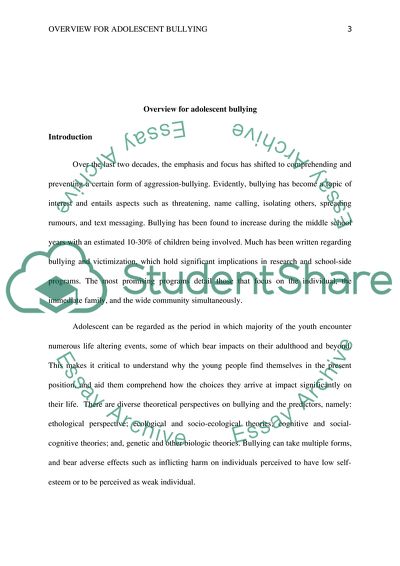Cite this document
(Overview for Adolescent Bullying Literature review Example | Topics and Well Written Essays - 2000 words, n.d.)
Overview for Adolescent Bullying Literature review Example | Topics and Well Written Essays - 2000 words. https://studentshare.org/sociology/1794802-write-a-state-of-the-science-overview-for-adolescent-bullying
Overview for Adolescent Bullying Literature review Example | Topics and Well Written Essays - 2000 words. https://studentshare.org/sociology/1794802-write-a-state-of-the-science-overview-for-adolescent-bullying
(Overview for Adolescent Bullying Literature Review Example | Topics and Well Written Essays - 2000 Words)
Overview for Adolescent Bullying Literature Review Example | Topics and Well Written Essays - 2000 Words. https://studentshare.org/sociology/1794802-write-a-state-of-the-science-overview-for-adolescent-bullying.
Overview for Adolescent Bullying Literature Review Example | Topics and Well Written Essays - 2000 Words. https://studentshare.org/sociology/1794802-write-a-state-of-the-science-overview-for-adolescent-bullying.
“Overview for Adolescent Bullying Literature Review Example | Topics and Well Written Essays - 2000 Words”. https://studentshare.org/sociology/1794802-write-a-state-of-the-science-overview-for-adolescent-bullying.


